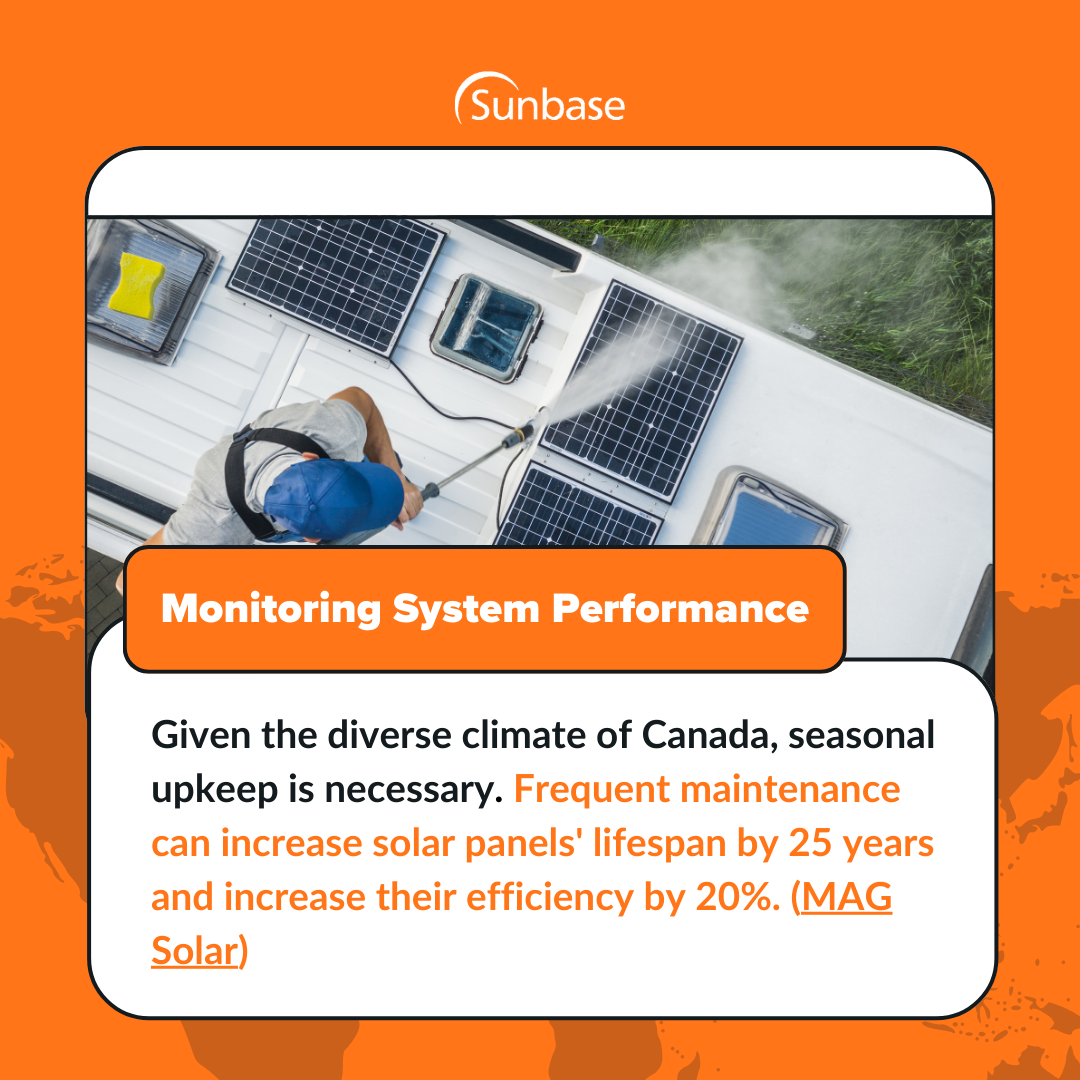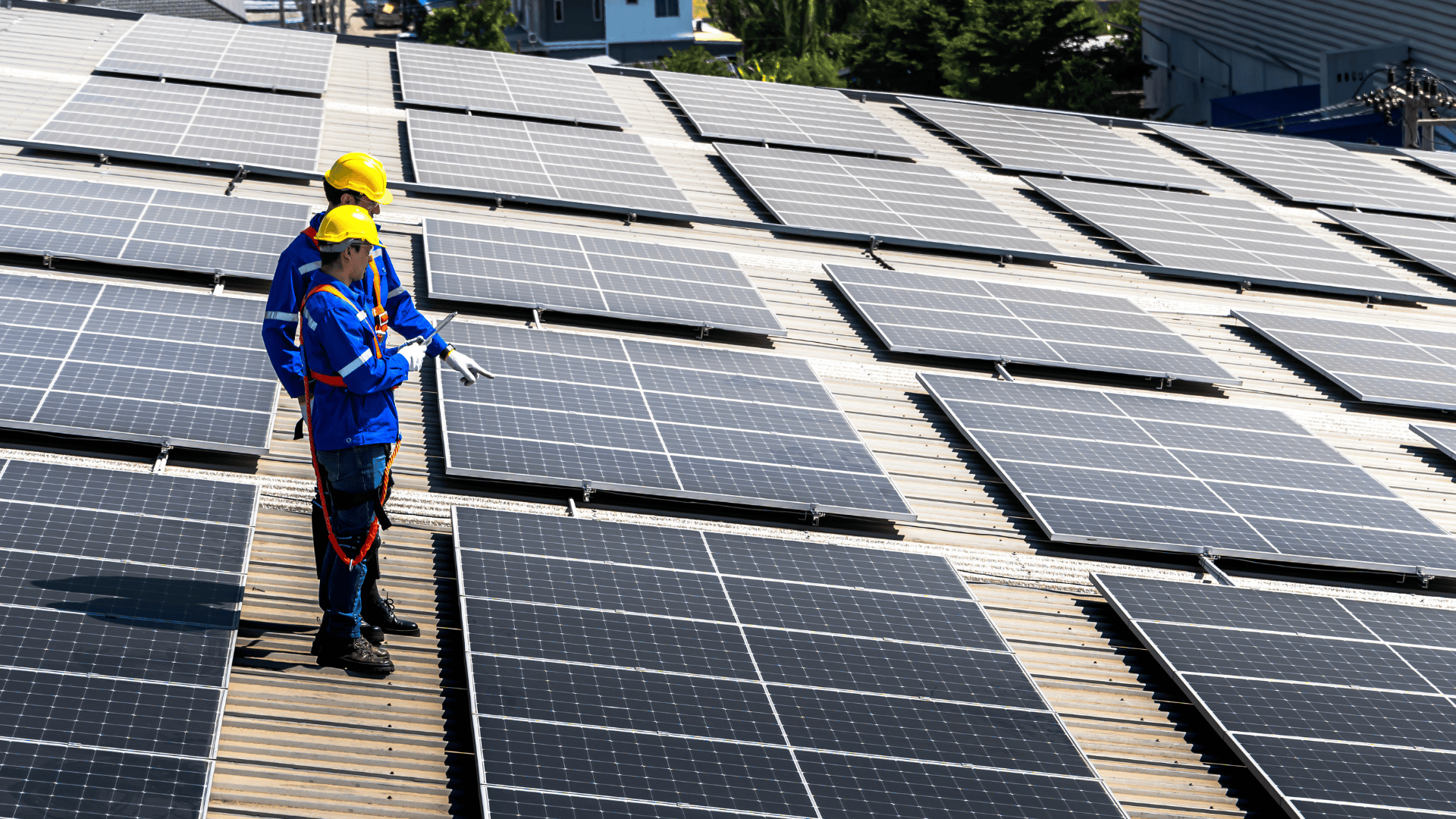December 18, 2024
Solar Installation Canada
Have you ever wondered how a sunny rooftop may be transformed into a clean, renewable energy powerhouse?
With more households turning to solar energy to lower their carbon footprint and energy expenses, the need for efficient and sustainable solar systems is escalating.
However, switching to solar requires more than just installing panels and wiring; it involves implementing best practices that guarantee enduring performance, compliance with Canadian regulations, and optimal energy production.
Let's make the most of Canada's renewable energy with these solar practices for residential projects.
Key Takeaways
- Assess your energy consumption and calculate ROI to guarantee that your solar installation is cost-effective and tailored to your specific needs.
- To optimize energy output, particularly in areas with snow, do a comprehensive roof and site survey.
- Invest in scalable storage systems, dependable inverters, and high-efficiency solar panels to meet Canada's varied climates and energy requirements.
- Reduce installation costs and increase long-term savings by taking advantage of initiatives like the federal Greener Homes Grant.
- Maintain optimal system performance all year by routinely assessing system performance and making necessary adjustments for seasonal variations.
Navigating The Canadian Solar Energy Landscape

> Geographical Potential
According to the Canadian Renewable Energy Association, the solar energy industry grew by 13.6% in 2021, reaching 2,399 MW of solar production. Ontario is Canada's most valuable solar energy source, accounting for about 96% of the country's output. (Global Energy Monitor Wiki)
The southern provinces of Alberta, Saskatchewan, and Ontario hold most of Canada's solar power generation potential.
> Energy Policies and Incentives
Are you planning on switching your residence to be more energy efficient? The wait is over! A Canadian Government Program called the Greener Homes Grant aims to lower carbon footprints and promote energy efficiency.
- The Canada Greener Homes Grant provides combined grants of $125 to $5,000 for qualified home retrofits. The maximum contribution from EnerGuide evaluations for pre- and post-renovation is $600.
- The grant can be used for green retrofits such as heat pumps, insulation, windows, solar panels, and other eligible renovations.
> Common Challenges in Canada
The widely held notion that solar panels can fail or perform poorly in colder climates is debunked by the fundamental benefits of more freezing temperatures. In contrast, modern solar solutions are ready to take advantage of the sunlight even as it cools down.
Another roadblock to solar adoption is the complicated structure of local permissions and construction regulations, which differ by province and municipality. This can lead to delays and increased costs for homeowners installing solar systems.
Check out this blog! To understand the Climate Impact on Solar Panels: How Sunbase Solar Solutions Enhances Durability.
What Are the Best Solar Practices for Canadian Homes?

Let's find out:
1. Planning of a Residential Solar Project
> Energy Needs Assessment
For solar installation, Canada's solar companies should evaluate the homeowner's energy needs to identify their unique electrical needs before installing solar panels. This includes examining previous energy bills to understand better consumption trends and detecting peak usage times.
> Understanding ROI and Payback Periods
Jumping to the primary concern, what is Solar's Estimated Return on Investment? Residential PV panel installations typically have a payback period of 7 to 10 years.
2. Site and Roof Analysis
> Roof Space Allocation and Structural Design
Depending on the structure set up, a single shade could affect a whole string of solar panels! To ensure your solar panel system can generate the maximum electricity possible, you might need to remove overshading trees or put a few more panels on a shaded roof.
South-facing roofs with an inclination of between 30 and 45 degrees are ideal for solar panel installation. Panels can receive the most sun exposure in this position. (Solar Reviews)
> Optimizing for Weather Resilience
As winter sets in places like Canada and temperatures drop, questions about the sustainability of solar panels in severe winter circumstances undoubtedly surface. Do solar panels perform at their best in the winter, or do they encounter major difficulties?
However, many contemporary solar energy systems are designed to withstand these circumstances and can continue producing winter electricity due to daylight hours and reduced energy requirements.
3. Choosing the Right Solar Technology
> Selecting panels suited for snowy or shaded environments
Although solar panels are long-lasting, manufacturer and type-specific durability varies. Canada's severe climate, which includes hot summers and icy winters, needs durable panels. Panels with substantial warranties of at least 20 years indicate a long-lasting product.
Polycrystalline and thin-film panels offer more affordable solutions with marginally shorter lifespans, while monocrystalline panels typically last the longest and have the highest reliability. Investing in long-lasting panels means dependable electricity for many years to come. (Volts Energies)
> Inverters and Battery Systems
High-quality inverters with monitoring features and battery storage systems are good investments for residents who want to store extra energy for use at night or during blackouts. To improve battery life and grid independence, invest resources in lithium-ion batteries and microinverters.
For example, storms frequently hitting Nova Scotia can result in severe power cuts, and combining solar panels with storage solutions can ensure uninterrupted electricity supply during storm-related power disruptions.
> Innovative Options
Emerging technologies make creating aesthetically pleasing solutions that match building designs easier. For example, Bifacial solar panels can capture light from both ends, which could boost energy production in reflective environments like snow.
4. Financial Considerations for Canadian Homeowners
> Financing Your Solar Project
Access to reasonably priced financing options and incentives is essential to shortening the solar panel payback period. Although Canada offers several federal and provincial incentives, the terms and availability can differ.
For example, the federal government provides grants and a solar investment tax credit for renewable energy projects; however, the qualifying requirements and availability may vary over the years.
> Maximizing Long-Term Savings
Investigate and learn about the financial incentives and government initiatives that may be able to help reduce the cost of solar panel installation. These initiatives include net metering plans, tax credits, grants, and rebates to help maximize the ROI.
5. Maintenance and Performance Optimization

> Monitoring System Performance
Given the diverse climate of Canada, seasonal upkeep is necessary. Frequent maintenance can increase solar panels' lifespan by 25 years and increase their efficiency by 20%. (MAG Solar)
Solar companies should use reactive and preventative maintenance techniques to optimize residential panel performance.
> Seasonal Adjustments
Additionally, homeowners should check their systems for any possible shade problems brought on by surrounding structures or growing plants.
Weather-resistant layers or sealants applied to panel frames and installations prevent corrosion and moisture penetration, increasing the panel's resilience, particularly in harsh conditions.
How Does Sunbase Transform Residential Solar Projects For The Canadian Market?

Here's how:
1. Solar-Specific Adaptability
The unique climatic conditions of Canada necessitate adaptive software.
Sunbase Solar Software caters to the specific needs of provinces such as British Columbia, Nova Scotia, and Prince Edward Island. Sunbase ensures that every project meets local demands while optimizing energy production.
2. Professional Solar Proposals
The first step in solar installation is a solar proposal. Homeowners must be professional and transparent when making solar energy investments.
With Sunbase, businesses can quickly produce visually striking proposals packed with data. These suggestions help clients comprehend the benefits of solar energy systems customized for their homes by offering energy cost savings, financial incentives, and ROI estimates.
Here's a detailed guide on how Sunbase’s proposal tools help customize solar solutions based on unique customer needs.
3. Advanced Design Tools
What if you could use a single platform to determine energy production, visualize the solar installation, and provide expert estimates? Sunbase makes it possible!
Sunbase's design tools use satellite images, shading analysis, and energy production models to optimize system structures. These designs operate optimally, even in shaded or snowy settings.
4. Comprehensive Project Management
Manage all of your solar projects without a headache. Sunbase simplifies project management from start to finish, guaranteeing that your solar installations are carried out perfectly.
Deliver top-notch solar services, manage resources effectively, and adhere to timelines. This is especially helpful for businesses that oversee several projects in Canada's most major cities.
Related: Learn more about the Solar Project Management Challenges and Sunbase Solutions.
5. Robust CRM
Your customers are the foundation of your solar business. Simplify your lead management process, monitor client communications, and oversee your sales funnel effortlessly.
Sunbase's user-friendly CRM solutions, created especially for the solar sector, will help you maintain your priorities and never neglect an update.
6. Operational Efficiency
It's time to eliminate manual processes. Sunbase automates tasks like permitting, inventory management, and system monitoring, allowing you to focus your efforts on more valuable tasks.
7. Scalability
Growth is a company's primary goal, and Sunbase helps you achieve it.
As a business expands, it can readily add users and access complex reporting functions without transferring systems or undergoing extensive retraining.
In a nutshell

As the solar sector grows throughout Canada, the profitability and sustainability of solar projects depend heavily on understanding and implementing best practices. Residential solar projects require a holistic design, execution, and maintenance approach.
Whether you're an experienced solar professional or new to the field, this guide will help you craft the complexity of solar project development and optimize your results for reliability, security, and business performance.
Discover More About Sunbase
The Canadian solar market is booming.
Are you ready to seize the opportunities with Sunbase Solar Software?
FAQ's
Q1. Can solar panels endure the severe climate in Canada?
Indeed, top-notch solar panels are made to withstand harsh weather conditions, such as freezing temperatures and heavy snowfall. Many of Canada's companies' panels are designed especially for regions like British Columbia and Nova Scotia.
Q2. What role does solar software have in residential solar projects?
Solar software, such as Sunbase, simplifies solar panel installation, from developing professional bids to constructing effective layouts. It's particularly advantageous for homeowners who want to achieve energy independence and deal with issues unique to Canadian homes.
I agree to receive marketing messaging from Sunbase at the phone number provided above. I understand data rates will apply, and can reply STOP to OPT OUT.







